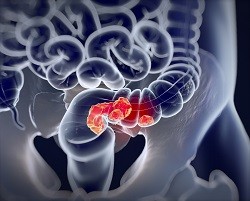Analysing microbial influence in colorectal cancer
While the human microbiome plays an essential role in modulating human health and disease, the actual biological mechanisms behind this are often unclear. The EU-funded TRANSVIVOME project has confirmed that co-colonisation of many bacterial species in both the mouth and gut could have implications for understanding the pathology of certain diseases including colorectal cancer (CRC). ‘The association between gut bacteria and CRC development has been reported in several large scale studies, which have often found oral microbes enriched in patient stool samples,’ explains TRANSVIVOME project coordinator Dr Peer Bork from the European Molecular Biology Laboratory in Heidelberg, Germany. ‘This discovery opens up the possibility of developing new novel types of diagnostic CRC tests.’ To date however, scientists have been unclear about the underlying biology; it is not known for example if these bacteria originate from the mouth of the patient, or already exist in the gut, but bloom in disease or else come from the environment. Analytical breakthroughs This was the starting point for the TRANSVIVOME project. Bork and his team set about developing and testing new methods to better understand how bacterial transmission occurs; whether oral strains are implicated in CRC development; and whether these bacteria are alive. A key achievement was developing a culture-independent method capable of determining whether bacteria are alive in samples. Using DNA and RNA data, the project found that it was possible to pin-point which bacteria species were present in any given sample, and if they were expressing these genes. ‘Since RNA degrades very fast (within hours) it can be inferred that if the RNA of a species is detected, then it is alive when the sample was taken,’ explains Bork. ‘This is a significant methodological advancement as only living cells have the potential to transmit and colonise different environments.’ The project also shone a light on the extent to which bacterial transmission between the mouth and gut occurs. Fine scale differences in the DNA sequences of over 1 700 bacterial species were determined from oral and gut samples isolated from people across the globe (Fiji, China, France, America, Luxembourg and Germany). ‘To our surprise and against common knowledge, we found that a large number of the bacteria in the mouth can indeed colonise the gut,’ says Bork. ‘Other species found to be in both the mouth and gut appeared to have distinct versions (strains) that are specialised to each body site.’ Future diagnostic potential Analytical methods pioneered and tested during the TRANSVIVOME project could eventually lead to the development of viable diagnostic tools for CRC and other diseases. The ability to distinguish between living bacteria, which are, and are not, transmitted between the oral cavity and the gut, has the potential to improve disease control studies on stool samples considerably. ‘With these methods, we can also now test whether specific strains of a given bacterial species can "leak" from the mouth to the gut,’ explains Bork. ‘If this is the case, there are new possibilities for developing CRC risk assessments. Determining which drivers of CRC development originate from the patient’s mouth may even allow for therapeutics to be targeted at this community.’ In all, the project provides a strong starting point for follow-up studies on diagnosing disease. ‘Although we were unable to collect a large enough cohort of CRC and case control samples during this project’s timespan, we have since launched another project in order to obtain the data we need to further develop CRC diagnostic markers,’ adds Bork.
Keywords
TRANSVIVOME, cancer, colorectal, oral, gut, bacterial, microbial

